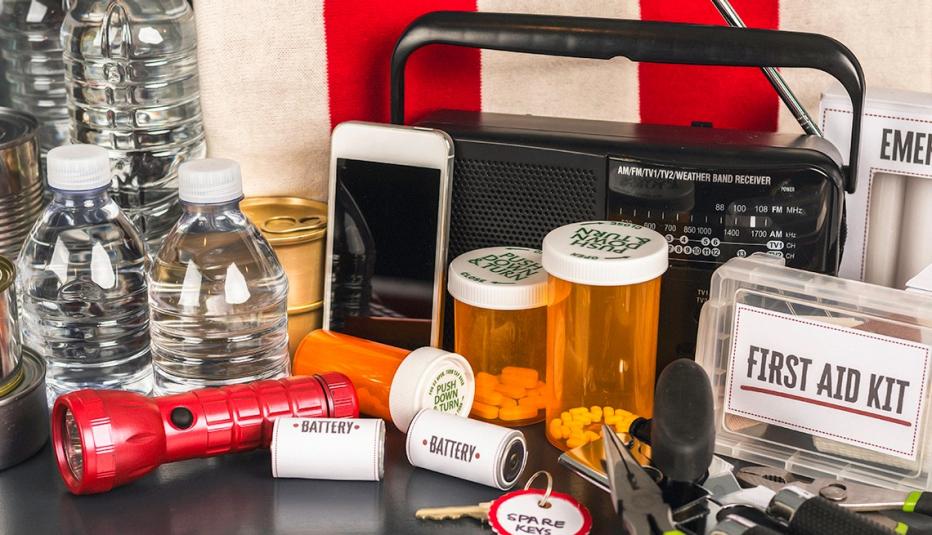AARP Hearing Center


Armed with smartphones, Nana and Gramps exchange smiles and waves over video chats with their young grandchildren to build and maintain strong bonds these days, a recent AARP study found. The research was conducted in partnership with researchers at LEGO Foundation, Georgetown University, and four additional U.S. universities.
Unsurprisingly, pandemic-driven separations drove many to video chats, including those of older generations, with 71% of grandparents of children ages birth to 5 years old reporting they increased their reliance on the technology because of COVID-19 stay-at-home precautions. Some even reported having never used video chatting platforms prior to the pandemic. Only 14% said they did not video chat with their grandchild.
Nevertheless, the survey of 1,157 grandparents found video connections, such as Zoom and FaceTime, to be a popular and frequent way to interact online, with nearly 40% reporting they logged on daily or a few times a week. These commonplace interactions helped keep families connected during the pandemic as some read books, others sang, and the youngest were entertained with a game of peek-a-boo.
Embracing an Emotional Connection
A heartwarming 82% of grandparents said they enjoy video chats with the youngest generation very much. The more frequently grandparents connected with grandchildren, the greater the enjoyment, with grandparents in particular reporting a stronger emotional bond.
FaceTime and Zoom sessions, however, did not have to last long to be meaningful. Most reported video encounters that lasted less than 30 minutes (68.1%), with the majority of those (36.2%) lasting a brief 5–15 minutes.
Parental Involvement Is a Key Driver
Parents’ roles are key not only in logging on, but also as facilitators. Grandparents acknowledged that they interact with the adults on the other end at least half the time and rely on them to help encourage the online visits.
Nearly half (47%) say parents help direct a child’s attention to the screen, while 41% pose questions and 36% give hugs and tickles on behalf of the grandparent.
Seeking Ideas for Engaging
Even with parents on the other end, grandparents are looking for more ideas and support on how to make video interactions engaging, supportive, and developmentally appropriate. They want to know how to connect through a screen and are looking for suggestions on activities that would make the time together stimulating and foster stronger communication.
Grandparents are particularly interested in how to stay involved as the child grows.
AARP has developed tips focused on the 3Cs: the individual child, the media content, and the context of the media experience. And last year during the pandemic AARP released recommendations and ZERO TO THREE tips suggesting grandparents adhere to the following:
- Take time to connect: If you were visiting in person, you might greet your grandchild with a hug, kiss, or high-five. Be creative about ways to warmly greet your grandchild via video, and remember that the child may need a moment to orient to the call. Ending your video in a special way each time is another fun way to connect.
- Be playful: Video chat lends itself to playful interaction, even during technical challenges. Consider how to adapt games like peek-a-boo, imitation, scavenger hunts, sharing snacks and meals, reading, and singing together.
- Be creative: Video chat works well for supporting play with objects: Bring things to the camera (food, coloring, books, snacks, etc.) for show and tell!
Barriers Are Mostly Emotional
While many grandparents of young children are digitally connected and comfortable with technology, they do face frustrating barriers to smooth video interactions. One in three grandparents (34%) reported screen freezing and a break in the signal interrupting their chats with grandchildren, making it the biggest technical hurdle to smooth video visits.
Still, nearly all grandparents surveyed owned smartphones (96%) and had access to high-speed internet (98.8%), making connecting with these tech savvy grandmas and grandpas as simple as clicking on the FaceTime icon. (FaceTime was by far the most used platform, with 56% of respondents relying on it. Zoom was a distant second at 13%.)
More frustrating than navigating the digital tools is being reminded of the physical separation. Missing in-person, face-to-face interactions was the biggest emotional challenge reported, with one in three (32%) respondents lamenting missed milestones.
Methodology
The online survey of 1,157 grandparents of young children was done via Qualtrics between June and August 2020. The researchers actively recruited a nonprobability sample of grandparents through online advertisements and existing community listservs. Grandparents age 30+ with young grandchildren were recruited to understand their video chat experiences through the pandemic.
For more information, please contact Brittne Kakulla at bkakulla@aarp.org. For media inquiries, please contact media@aarp.org.






























































